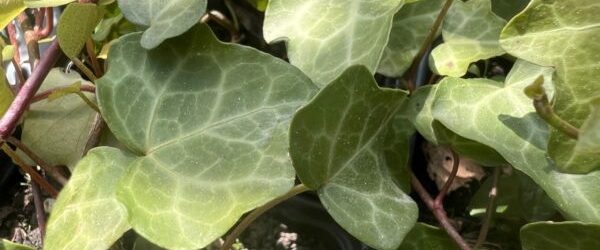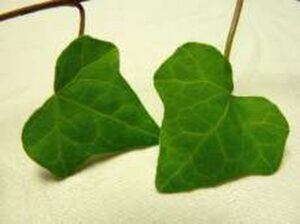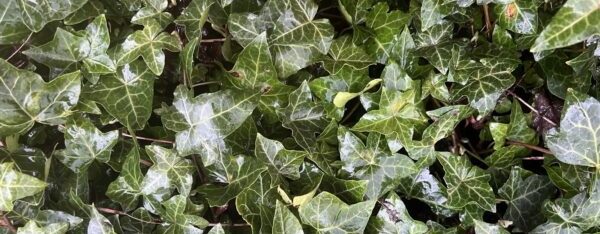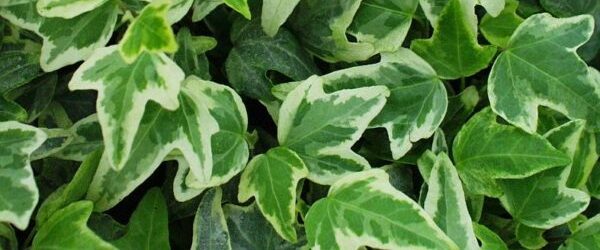
Japanese ivy
Japanese ivy, Hedera rhombea
Japanese ivy, Hedera rhombea, forms fine, delicate matte leaves with soft green or silvery veins.
The overall shape of the leaf is more like a rhombus, hence the name rhombea.
They generally have 3 to 5 lobes, often shallow. The base is sometimes cordate (heart-shaped), sometimes truncated, sometimes hastate (arrow-shaped). The central lobe is triangular.
Creeping or climbing ivy, depending on the opportunity. It is vigorous and can grow up to 10 m long.
When fully grown, Japanese ivy forms cream-colored umbellate flowers. Flowering takes place in autumn. The fruit that follows are berries, black when ripe.
Ecological value of Japanese ivy
Like all ivy, Japanese ivy is a boon to biodiversity. The plant provides shelter and food for a wide variety of insects and birds.
Japanese ivy - Origins and variants
As its name suggests, Japanese ivy comes from eastern Asia, mainly Japan, Taiwan and Korea.
Hedera rhombea likes damp, shady places such as pine forests or riverbanks.
On the island of Taiwan, ivy is found with juvenile leaves featuring a broad, triangular central lobe, acuminate tip and truncated base. Some botanists refer to it as Hedera formosana.
Similarly, another species of ivy from this region, with slender peduncles and pedicels, has been named Hedera pedunculata.
But in both cases, the distinguishing features are quite subtle and, above all, there is a continuity of these features in the field. As a result, botanists' most frequent conclusion is to recognize a single species for these different variants: Hedera rhombea.
Planting, cultivation and care tips for Japanese ivy
Ivy is one of the easiest plants to grow in our gardens. It's undemanding in terms of soil type: limestone soil, neutral soil or acid soil are all suitable (unlike common ivy, Hedera helix). In terms of exposure, it thrives in both shade and sun, with a preference for shade or part-shade. It is drought-resistant, but thrives best in cool soil. If the soil is good, i.e. sufficiently rich in humus, no fertilizer is needed.
How to use Japanese ivy in the garden?
Ivy can be easily integrated into any garden, small or large. Unlike other perennials or climbers, it has the advantage of staying green and beautiful all year round. Hiding an unsightly wall, forming hedges to protect privacy, covering the ground under trees, including fruit trees, dressing the wall of a facade, brightening up a shady space - almost anything is possible with this type of plant. If you're planning to plant an ivy hedge, you'll need to install a wire mesh to support it. Allow 2 to 3 ivy plants per linear metre.
However, there are a few uses for ivy that are less recommended: avoid placing it in the middle of rose bushes, as it tends to smother them. The combination of bulbs and ivy is not a happy one either. But there are so many other possibilities with this type of plant. Of course, Japanese ivy has an indisputable place in a Japanese garden, at the edge of a spring or covering rocks, for example.
In any case, plan to prune every year, for example at the end of winter. The aim is to keep the ivy in the area or on the surface you have set aside for it. Be aware that ivy is a plant that tolerates severe pruning very well, so if you've neglected maintenance for a year or two, you can correct this with vigorous pruning. Japanese ivy as ground cover offers another significant advantage: weeds are virtually non-existent, as they are smothered by the ivy.
Buy Japanese ivy
We have several cultivars of Japanese ivy in our collection: the widest choice of ivy of any online plant retailer. You'll find full information on plant size and price. We ship the plants you order every Monday. Your order will be delivered within a week of placing it. Our stock is both large and limited. We have a large stock of ivy types. But we have a limited stock of each type of ivy. However, if you require large quantities of certain products, we can grow the variety you want.
To help you choose the right product for you, here are the main characteristics of the Japanese ivy in our collection:
- Hedera rhombea 'Eastern Dawn': an ivy with variegated foliage that thrives in sunlight
- Hedera rhombea 'Pierot': a miniature ivy with brown-tinted leaves in cold conditions.
- Hedera rhombea semi-arborescent: a shrubby ivy of great aesthetic interest.
- Hedera rhombea 'Submarginata Arborescens': a shrubby ivy with marbled leaves.
- Hedera rhombea 'Variegata': ivy with white-edged leaves.
False Japanese ivy - I've had it!!!
You can find a plant called "Japanese ivy" that isn't actually ivy at all. It's a Virginia creeper! See what Wikipedia has to say.
Do a Google search for "Japanese ivy" or "lierre du Japon". What do you find? Only Virginia creeper! Not a word about ivy! And then they say that Google selects the most relevant content! Ivy is ivy and its botanical name is Hedera. Virginia creeper has never been an ivy. Its botanical name is Parthenocissus. They're not even in the same family.
But this isn't the first time some people have confused ivy with Virginia creeper. Just look at photos of ivy on Pixabay or Pinterest, for example. You'll find plenty of photos of Virginia creeper! Sure, they're both climbers, but that's about all they have in common.
In this respect, beware of vernacular names, i.e. plant names in everyday language. Of course, it's easier to talk about ivy than Hedera, or cabbage rather than Brassica. Not everyone speaks Latin! Especially these days!
But the same plant can have many different vernacular names, depending on custom or region. Some are correct, but others are confusing. Sometimes even dangerously so. Take laurel, for example. Don't try using oleander to flavour your sauces. It's a highly toxic plant, and yet it's called laurel, but wrongly so because it's not a plant of the Laurus genus.
So let's get serious and call plants by their proper names. There's only one Japanese ivy, botanically speaking, and that's Hedera rhombea. Don't be fooled by anyone, including well-known nurseries, offering you Japanese ivy that isn't ivy!



